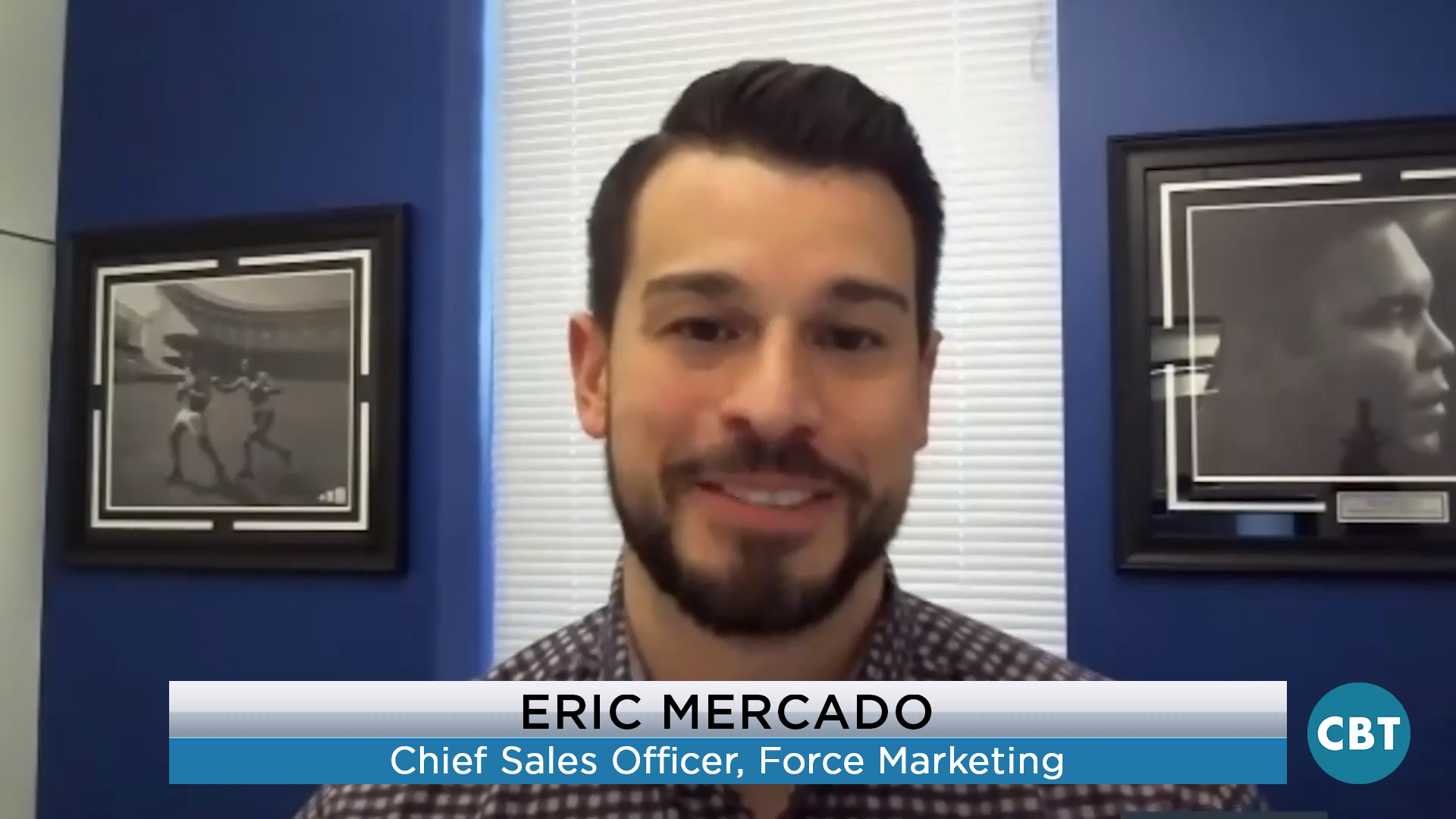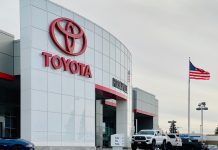Successful digital marketing strategies are more important now than ever for your dealership, but how can dealers accurately measure their online engagement? On today’s show, Jim speaks with Eric Mercado, Chief Sales Officer for Force Marketing to discuss the best marketing practices to implement at your dealership in the new year.
VIDEO TRANSCRIPT:
Jim Fitzpatrick: I want to pick your brain a little bit, Eric, so welcome to the show.Digital Marketing Strategies for Your Dealership to Use This Year
Eric Mercado: Thanks for having me. It’s always a pleasure.
Jim Fitzpatrick: Sure. What are you telling your clients and dealers, and their marketing teams to focus on in 2019, to just crush it as we see some headwinds coming down the pike for new car sales in 2019?
Eric Mercado: That’s a great question, and pre-planning is the key to success. One of the things that we try to do for our accounts is to get at least a quarterly plan in place for them to kick off the new year, and that be a complete multichannel marketing, nothing left out. We want to know who are the audiences that we’re targeting? We want to know what’s the allocation spend to get those audiences and reach them at the highest level of impression, shares, or frequency. We want to know what’s the messaging, and how does that play along with your benchmarks for sales, for service, for maybe even used car sales?
Jim Fitzpatrick: And when you talk about planning, what specifically should they be planning to do? What is it? Should it be social marketing? Should it be digital marketing? Should it be pay-per-click? How does traditional marketing play into this and traditional advertising mean, such as TV, radio, direct mail, and such? Is there still a place for that?
Eric Mercado: Yes, there is. There is no perfect mix. If there was, there’d be one marketing company. You need to figure out what’s been working for you, and how you can optimize those channels. Paid search is important. Social media is important. Capturing consumers on their mobile phones. If a consumer is looking at their Facebook profile, eight to 12 times a day, which I believe is understated, how are we targeting those consumers? Specifically, ones that have historically exhibited in-market behavior to buy a new car, or a used car, or to service their current vehicle? Maybe they’re redeeming offers, subscriptions. Let’s target those audiences, where they are going to consume the most information, which is through a social media app, through their mobile phone. And then, when they start their research process, let’s make sure that we’re giving them the right information on search engine platforms like Google, and Bing, and even Yahoo in some scenarios.
Jim Fitzpatrick: I know I’m asking a loaded question here, but for some of the dealers that are watching right now that spend, let’s say on average, $60,000 a month in advertising and marketing. Can you give us a breakdown as a rough percentage? And we won’t hold you to it because we understand that there’s going to be some specifics that jump out in certain markets to certain makes. But overall, how much should a dealer be spending in digital and social marketing out of a $60,000 ad budget?
Eric Mercado: Right now, the average dealer spends about 35% of their total marketing budget on digital channels.
Jim Fitzpatrick: And that includes social as well? Would that include Facebook?
Eric Mercado: That would include social media. That would include third-party lead providers, so…
Jim Fitzpatrick: Everything, okay.
Eric Mercado: I’m not going to plug any of ’em, but you know who they are. That would include your current managed services, so your own paid search, your own Facebook, your own display, your own video. And in 2020, to compete, the average dealer is going to need to spend north of 70% of their dollars in those same exact channels.
Jim Fitzpatrick: Wow, so double?
Eric Mercado: Yeah. We have to evolve with the consumer shopping behavior, and Google will say that the average consumer spends 75% of their research time, when they’re looking to buy a new vehicle, on digital channels. They’re consuming data through digital channels. I think in 2019, you’re going to see a lot of dealers do that. They’re going to be a little bit more surgical with their spends. They’re going to double down on digital channels, and they’re going to start to wean off of some of the traditional spends that they have in place that they can’t measure and they can’t identify in ROI form.
Jim Fitzpatrick: NADA says that the average dealer spends north of $625 a car in advertising. Is it conceivable that through an effective ad campaign, you could cut that number in half?
Eric Mercado: Yes. Yes, it is very conceivable.
Jim Fitzpatrick: What should a dealer be looking to spend today per car in their ad budget, in your opinion?
Eric Mercado: That is a great question, and it’s different for every dealer. I have a dealership in Trenton, New Jersey, that spends under $100 a cost-per-acquisition, and they’re the top 10 Honda dealership in the country. I have another Honda dealership that’s in southern California that spends north of $500 cost-per-acquisition. I don’t think it needs to be tailored solely around cost-per-acquisition. I think that’s a very important metric that you’ve got to get your hands on. And of course, you want to be below the industry average. I mean, who wants to be spending more than what the rest of the industry is?
I think the more important metrics are which particular lead sources drive the most qualitative leads? And which particular KPIs do I need to focus on that impact the bottom line of my business? You might have some people that say cost-per-lead. If I can see how many leads I get for my spend, then I know what my closing percentage is, and I know how many cars I’m going to sell. Now, if you jump in and you’re just absolutely not going off the ball and the key metrics that drive your business, cost-per-acquisition being low, then start to pull some of the levers to dominate. What I mean by that is how can I get more? What if my cost-per-acquisition goes up $20, but I sell 40 more cars?
Jim F.: Right.
Eric Mercado: How much do I have to invest to get that, right?
Jim Fitzpatrick: And should that be looked at on a daily, weekly, or monthly basis?
Eric Mercado: I think the best way to do it is monthly. The most digestible and the way where you can actually take statistics and put them into motion, use them, is monthly. When you start looking at things weekly, you’ve got to think the average dealership sells probably 30% of their vehicles in the last week of the month, so that’s going to throw some things off.
There’s seasonality factored in quarterly that’s going to throw things off. When you start looking at things from a monthly perspective, and then even another level of maybe three, six, and a year perspective, you can start to look at a full body of work and what your return on investment looks like and what those stats look like. Now, you have true benchmarks to set for the following year. When we start talking about, like we’re talking about today, 2019 planning, do you really know what 2018 looked like?
Jim Fitzpatrick: That’s exactly right. Eric Mercado, Chief Sales Officer for Force Marketing. I want to thank you so much for joining us on CBT News. We really appreciate it. I know the dealers have gotten a lot out of your discussion here today, and listen to Eric. He knows the deal, man. He’s been doing it for 15 years. If not a large majority of your ad dollars are in digital and social marketing, you may be in trouble in 2019, right, Eric?
Eric Mercado: I would wholeheartedly agree. I think that you gotta skate to where the puck is going. And in this scenario, the puck has been sitting there for two years, and we still have people waiting for the puck.
Jim Fitzpatrick: Again, thanks, Eric. I appreciate it.
Eric Mercado: I thank you a lot for your time. I appreciate it.
CBT Automotive Network. The number one most-watched network in retail automotive. CBT is a part of the JBF Business Media family.









